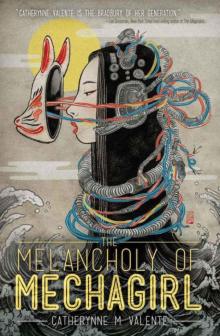


Cairo, Page 9
Max Rodenbeck
Yet the Fatimids faced an immediate problem. The people they ruled—those who were not Christian or Jewish, that is—were overwhelmingly Sunni Muslims. Moreover, the Fatimids’ purported descent from the Prophet was widely disbelieved. When the conqueror al-Mu‘izz li Din Allah—the name means Glorifier of the Faith of Allah—entered Misr al-Fustat on horseback, it was said, an upright citizen challenged his claim to the title of caliph. Al-Mu’izz thereupon drew his sword. “Here is my lineage,” he declared. Then, scattering gold coins from his purse, he continued, “And here is my proof.”
The Fatimids harbored no illusion of winning wholesale conversions to Shi‘ism. In any case, their version of the creed, influenced by later Greek philosophy, taught that true religion was beyond the understanding of the simpleminded masses. So, rather than antagonize their subjects, the Fatimids set out to dilute their faith with folk belief. Several acknowledged members of the Prophet’s family were already buried and venerated at Cairo. These, and the remains of other ancestors al-Mu‘izz purposefully carried with him to his new capital, were now furnished with fancy shrines. Ostentatious almsgiving encouraged devotional visits to these family tombs. Soon the habit of the few became the custom of the many. Tomb-visiting became so popular, in fact, that the sixth Fatimid caliph, al-Hakim, was reportedly only narrowly dissuaded from bringing the body of the Prophet himself from Medina.
After 200 splendid years—years in which Cairo emerged as the greatest city in Islam—the Fatimid regime declined into decadence and intrigue. Christian Crusaders, installed now in Palestine, threatened the Abode of Islam. Seeking allies against the invaders—even Shi‘ite heretics—in 1168 a Sunni general named Saladin (or, more properly in Arabic, Salah al-Din al-Ayyubi) arrived from Syria to enlist support from the foundering Fatimids. To his surprise, Saladin found it easier to shunt Cairo’s rulers aside and take command of their empire himself.
Saladin had no genealogical pretensions—he was, in any case, of Kurdish, not Arab origin. Instead, he claimed legitimacy from his upholding of Sunni orthodoxy. Pledging allegiance to the Abbasid caliphs of Baghdad, he took for himself the lesser title of sultan. Saladin stamped out Shi‘ite practices by locking up or executing the entire Fatimid court. Reintroducing the old schools of law, he built new colleges and imported Sunni professors from the East to staff them. He opened the imperial precinct of Cairo to the public, requisitioned its palaces for his officers, and ordered the construction of a new and more secure royal residence. This was to be the Citadel, whose turrets and minarets still grace Cairo’s skyline.
Just as the Ptolemies had accommodated Memphite beliefs, so Saladin’s successors saw the wisdom of respecting popular custom. Cairenes continued to revere the illustrious dead—except, of course, the later descendants of the Fatimids.*5 The new rulers encouraged them by restoring the Imam al-Shafi‘i’s shrine, which had fallen into decay along with those of other early Sunni jurists and scholars. They paid officials to oversee Friday tours of Sunni-sanctioned tombs, and even instituted a police force to prevent immoral behavior in the cemetery, which apparently was common. Saladin’s nephew al-Kamil al-Ayyubi (1218–38), a statesmanlike sultan who infuriated both Christian and Muslim extremists by agreeing to share control of Jerusalem with the Crusaders, occasionally took part in tomb tours himself. He may have been assisted by the publication of guidebooks such as one by a certain Muwaffaq al-Din ibn Uthman, which advised pilgrims not to kiss the holy men’s tombs because this was “a Christian habit.”
The Ayyubids also encouraged Sufism, the Islamic mysticism that was taking the thirteenth century by storm. Named after the rough sūf or wool garments its early adherents wore, this new religious approach softened the edges of dry orthodoxy by incorporating esoteric beliefs. Among them was the idea that certain sheikhs became wālis. (The proper Arabic plural is actually awliya.) Like the pharaohs and like the Shi‘ite imams, perhaps, these masters grew so close to God that they became vessels for the divine. They could intercede with the Almighty or simply—by touch or speech or thought—dispense his baraka. Not surprisingly, these powers were believed by some to follow their sheikhs into the grave. And so yet another constellation of holy tombs began to sprout.
Again, some were the tombs of sheikhs who had well-earned reputations for miracles, or especial kindness or learning. But popular demand for folk heroes led to the elevation of some very suspect characters. For instance, the eighteenth-century historian Abd al-Rahman al-Jabarti described a contemporary of his named Sheikh Ali al-Bakri, who earned a reputation for holiness by wandering about the city naked and babbling. Seeing the potential, Sheikh Ali’s brother set himself up as a manager and collected pious donations. Sheikh Ali grew enormously fat, wrote al-Jabarti:
Men and women, and particularly the wives of the grandees, flocked to him with presents and votive offerings which enriched the coffers of his brother. The honors which he received ended not with his death. His funeral was attended by multitudes from every quarter. His brother buried him in the mosque of al-Sharaibee…and frequently repaired thither with readers of the Koran, munshids to sing odes in his honor, flag-bearers, and other persons who wailed and screamed, rubbed their faces against the bars of the window before his grave, and caught the air of the place in their hands to thrust it into their bosoms and pockets.
Forty years later, Edward Lane remarked that whenever he passed the tomb of Sheikh Ali his servant would touch the bars of its window with his right hand, then kiss his fingers to obtain a blessing.
Lane and al-Jabarti were not alone in scorning such excess. One eighteenth-century governor of the city, when told that a mosque keeper had attracted a following by claiming his goat was an incarnated saint, had the animal roasted and served to its owner. At the end of the nineteenth century the government banned the dawsa, a Sufi practice whereby the sheikhs of some orders tested the faith of disciples by riding over their prostrate bodies on horseback. But Cairo’s rulers usually preferred to accommodate popular fervor. Early in the eighteenth century angry mobs had forced the authorities to banish a preacher who dared to attack saint worship. Long before—in the fourteenth century—the killjoy cleric Ibn Taymiyya sparked a protest march of 500 Sufis with his railings against “innovation” in the practice of Islam. Famed for his severity—he once kicked over a backgammon board in a Cairo street because he disapproved of games, and argued that not just women but pretty adolescent boys too should be veiled from public view—Ibn Taymiyya was eventually locked up in the Citadel. Ironically, on his death he himself was revered for a time as a saint. His tomb in Damascus became a place of pilgrimage.
Nowadays Ibn Taymiyya has stopped turning in his grave. Islam’s new fundamentalists have revived his puritan ethics.
GIVEN MEDIEVAL Cairo’s fascination with tombs, unpopular rulers found it expedient to buy favor by embellishing famous shrines. Imam al-Shafi‘i’s, for instance, was restored seven times. But the more ambitious of sultans then went a step further: they began to build monumental tombs for themselves.
The idea was helped by a foreign influence. From the eleventh century onward the Turks flooded into the Islamic world, joining the same great flux of peoples from the Central Asian steppes that brought the Huns to the Danube, the Tatars to the Don, and the Mongols to the gates of Damascus. They arrived in Cairo mostly by way of the slave markets, where Turkish boys in particular fetched high prices for their fair skin, straight hair, and horsemanship. Turks were already famed as warriors. Aside from their fighting tradition, they carried with them a custom of burying their chieftains in elaborate tombs—a custom that reflected, perhaps, the nomad’s yearning for permanence.
The last of the major Ayyubid sultans, Saladin’s great-nephew al-Salih Ayyub (1240–49), was a hard man and a stickler for loyalty. He warred against his cousins, was said to have had his own brother strangled, and distrusted his son so much that he dispatched the boy to the Anatolian marches at the farthest corner of his kingdom. Al-Salih’s character disposed hi
m to heed these words of Nizam al-Mulk, an eleventh-century wazir of Baghdad, who was admired as the Machiavelli of his age: “One obedient slave is better than 300 sons; for the latter desire their father’s death, the former long life for his master.” And so al-Salih indulged himself in importing a whole corps of superb slave boys from across the lands of Central Asia and the Caucasus.
They became known as Mamelukes, which meant those who are owned—as distinct from the terms garya and ghulam, which referred to ordinary girl and boy household slaves. After rigorous training in court etiquette, Islamic sciences, and all the martial arts, the slave recruits were freed. But even as adult soldiers they were expected to remain loyal to their master, to be servants to his household, and brothers in arms with their fellows, bound by an indomitable esprit de corps. In time the Mamelukes—as they continued to be called as freedmen—became a proud military caste much like the samurai of Japan. Equipped with the latest in Eastern military technology—including stirrups and the recurved composite bow, a Turkish invention that was much lighter than the longbow but nearly as powerful—these sword- and lance-wielding horseborne archers soon made mincemeat of the lumbering Crusader knights.
It was in the midst of a campaign in the Nile Delta, where the Franks under Louis IX had landed in the hope of pressing on to Cairo, that Sultan al-Salih Ayyub died of a fever. His wife Shagar al-Durr, a Turcoman slave who had been a gift from the Abbasid caliph, took the chief of the Mameluke guard into her confidence to conceal the sultan’s death. The pair maintained the fiction for two months—long enough for al-Salih’s son to be recalled from northern Syria to assume command. The ruse succeeded. The Franks suffered a resounding defeat. Louis was captured and ransomed for a million gold dinars. But the former sultan’s Mamelukes, flush with victory, resented his son’s haughty ways. They bridled particularly at his promotion of African eunuchs to the highest positions. Shagar al-Durr was angry, too; the boy rashly demanded that she hand over her jewels. And so al-Salih’s Mamelukes murdered their master’s son.
Precarious as her position was, Shagar al-Durr managed to complete the coup d’état. For eighty days she ruled as sultana—the rarest of feats for a woman in medieval Islam.*6 The outraged Abbasid caliph, who was of course her original owner, dispatched a stinging note from Baghdad: “Since no man among you is worthy of being sultan I will come in person and bring you one. Know you not that the Prophet—may he be exalted—has said, “ ‘Woe unto nations governed by woman’?” Determined to legitimize her rule, Shagar al-Durr married the chief of her husband’s Mamelukes and had him proclaimed sultan. No fool she: she first had him divorce his wife Umm Ali. Not only that, but she continued to hold the reins of power herself.
All went smoothly for seven years. The growing corps of Mamelukes stifled rumbles of dissent from partisans of the Ayyubid family. A hapless six-year-old cousin of al-Salih Ayyub was named coregent, a clever move to give the appearance of continuity. Shagar al-Durr then played a propaganda trump. She built a splendid mausoleum for her deceased husband. Shunning the cemeteries, she placed it on the site of the former Fatimid palace, smack in the middle of the busiest thoroughfare in Cairo. (It still stands in the bazaar of the brass merchants, next to the soaring gateway and minaret of the law school that al-Salih himself had built earlier.)
Shagar al-Durr had secured her legitimacy for a time. One day, however, she learned that her Mameluke husband was planning to take a Turkish princess as a second wife. (Technically he was allowed four.) Jealousy, and the notion of this slave soldier scheming to forge dynastic ties on his own, drove her to violence. She summoned him to the Citadel. The officer, wary of her temper and fearful because an astrologer had told him he would die by the hand of a woman, had to be cajoled into leaving a polo match in the western suburbs of the city. His instincts were right. Five assassins stabbed him fatally on the way to the palace.
It was said that Shagar al-Durr realized she was doomed, and so crushed her jewels in a mortar to stop them from ever falling into the hands of another woman. Soon after that, Ali, her Mameluke husband’s son by his first wife, stormed the palace with a furious band of his father’s troops. They hauled the sultana from her quarters and flung her at the mercy of his mother. Umm Ali—who had been divorced from her dashing officer in favor of Shagar al-Durr—struck her rival and hurled insults before having her female servants strip the ex-sultana and beat her to death with wooden bath clogs.*7 Then, as the fifteenth-century historian Ibn Iyas recalls, “She was dragged by the feet and thrown from the top of the moat naked, with nothing but a garment around the waist. She remained there in the moat for three days, unburied, until, it is said, one of the rabble descended into the moat under cover of night and cut off the sash of her garment because it was of red silk with a circle of pearls and because it smelled of musk.” At length Shagar al-Durr was buried in her own magnificent tomb. She had built it, with admirable foresight, in a choice spot near the shrines of the female saints Nafisa, Ruqqaya, Atika, and Sukayna.
In 1258, less than a year after Shagar al-Durr met her end, Mongol hordes razed the caliphal capital of Baghdad, building pyramids of skulls in its place. Genghis Khan’s wild cavalry rolled the captured caliph up in a carpet and trampled him to death. Remnants of the Abbasid family fled to Cairo, whose Mameluke slaves-turned-masters had became the only force capable of resisting the Mongols. For two and a half centuries thereafter the Mamelukes, having established a rigidly militaristic regime that perpetuated the tradition of martial servitude and advancement, kept the once-omnipotent caliphs at Cairo as puppet popes. So low did the Abbasids’ fortunes sink that, for lack of a fitting tomb of his own, one of the last of their number was laid to rest beside Shagar al-Durr, his great-great-grandfather’s slave girl.
Inside the chamber under her dome, a mosaic in cut glass adorns the curve of the niche that indicates the direction of Mecca. In a poetical allusion to Shagar al-Durr—whose fanciful name means Tree of Pearls—it shows a tree bearing fruit formed by little pieces of mother-of-pearl. The wooden cenotaph nearby carries this apt verse:
O ye who stand beside my grave, show not surprise at my condition.
Yesterday I was as you. Tomorrow you will be as me.
SHAGAR AL-DURR had set a new standard. From her time onward every Cairene grandee or grande dame invested in a domed mausoleum as soon as their career permitted. As she had done with her husband’s tomb, they attached them by preference to pious foundations: schools or mosques, or hostels for dervishes—whatever would best enhance the patron’s image as a champion of the faith. With time, the fashion transformed the processional streets of the Mameluke capital into the avenues of funerary foundations that one sees today, their narrow roadways dwarfed, Wall Street—like, by soaring domes and minarets.
Cairo’s architects quickly grasped their Turkish overlords’ desire for dramatic effect. Their designs evolved to emphasize verticality: inset panels, monumental portals, and striped stonework drew the eye upward to the ever-taller minarets. The increasing density of the city stretched the skill of its builders further. Staggered facades cleverly exposed the buildings’ main features to the street. Ingenious floor plans squeezed perfectly proportioned and Mecca-oriented inner courtyards into the most irregular of plots. The sepulchral domes themselves grew in size and sophistication. Muqattam limestone replaced brick, and then was cut to form ridges which were refined into elaborate geometric patterns so that the last domes of the Mameluke sultanate became the carved tapestries of starbursts and interlaced flowers that are best seen in the great cemeteries east of the city walls at the tombs of the fifteenth-century sultans Barsbay and Qayt-bay.
It was not merely fashion that pushed the Mamelukes to morbid heights of tomb-building. Sudden, violent death was all too common among the ruling elite of former slaves. Of fifty-three Mameluke sultans between 1257 and 1517, nineteen were murdered, assassinated, or executed. Only ten died in office of natural causes; the rest were deposed. The Mameluke system, whereby the
sultan granted fiefdoms to his generals in return for their maintenance of private armies, concentrated all the wealth of the sultanate, which is to say of Egypt, of Syria, and of the Arabian littoral south beyond Mecca, in the hands of a few great amirs. Since their holdings reverted to the state when they died, these generals were encouraged to spend while they could. Hence the temptation to build tombs—reinforced, perhaps, by hopes that one day the people of Cairo would forget their dastardly deeds and turn them into saints.
It was not too far-fetched a wish. Across from the tomb that Shagar al-Durr built for her husband, the Mameluke sultan al-Mansur Qalawun was to undertake a far more ambitious construction. His work perfectly embodied the character of the Mameluke regime, combining ruthlessness, extravagance, and aesthetic refinement with a craving for popularity. Qalawun had the current tenant of the chosen property, an Ayyubid princess, turned out. He then had the city’s finest artisans rounded up to help with demolition and rebuilding. The sultan’s soldiers forced hapless wayfarers—even distinguished sheikhs—to carry stones. Despite popular indignation, which was so great that the sultan’s propagandists felt obliged to spread the tale that it was not taxes but rather a secret treasure found on the site that paid for the building, the whole immense structure was completed in a single year. On its opening in 1285 courageous clerics at first declared prayer there unlawful. When one was finally coaxed into delivering an inaugural sermon, he used the occasion to blast the sultan for his tyranny.
Qalawun intended his monument to establish his own and his city’s glory beyond all question. To appeal to the common people, it housed a free hospital that was endowed with the best doctors and druggists of the age. The college of medicine and Islamic law next door catered to the educated classes. For the sultan himself there was a fabulous tomb chamber. Faced with intricately carved stucco, lined with polychrome marble, and with stone puzzled into endless repetitions of the name Muhammad, the whole was topped by a great dome raised on granite pharaonic columns with Corinthian capitals pilfered from the declining city of Alexandria.














